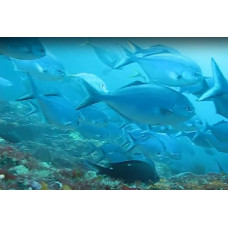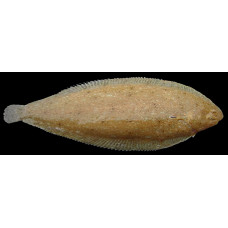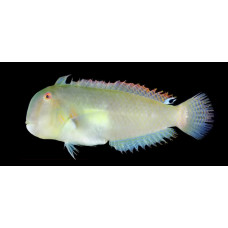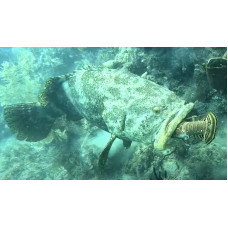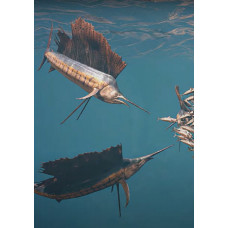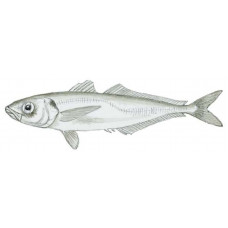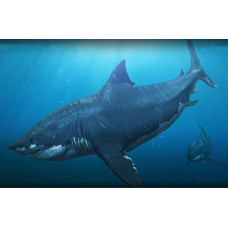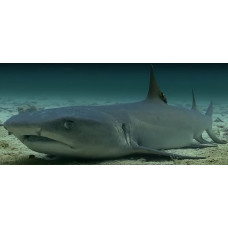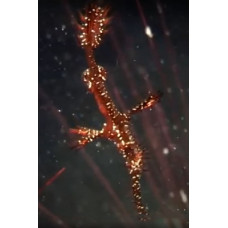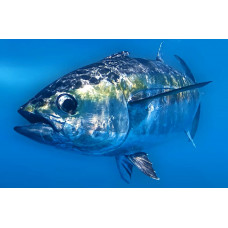Fauna of the Tasman Sea
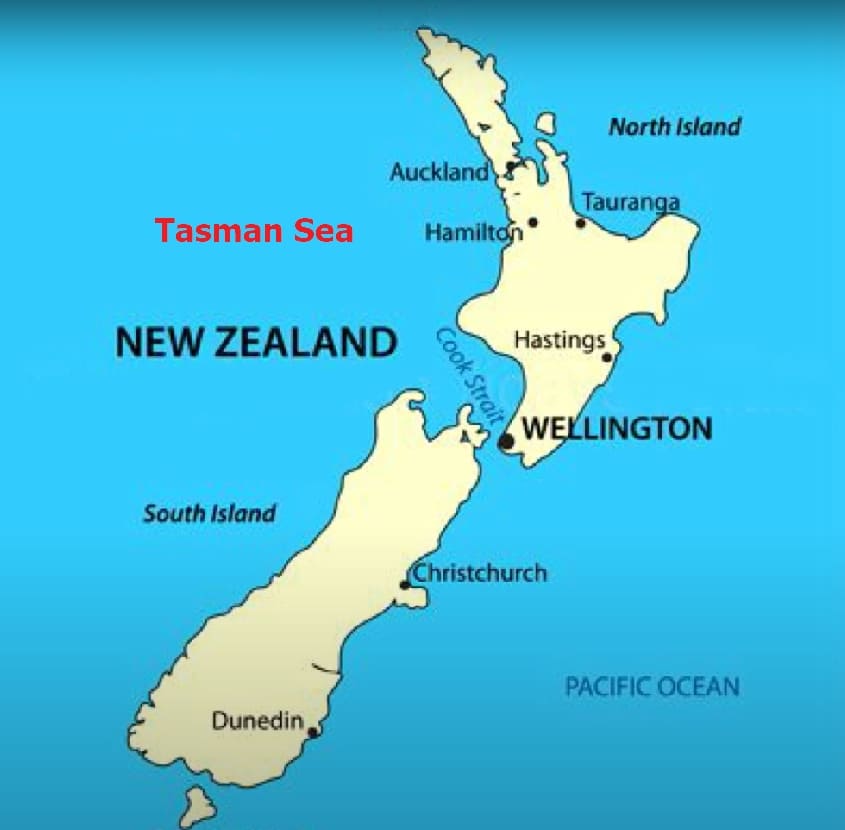 The Tasman Sea is located in the southwestern Pacific Ocean and separates Australia and New Zealand. The sea is very deep as it has the East Australian Basin at its bottom with a maximum depth of over 6,000 meters. The Tasman Sea is 2,250 kilometers wide and has an area of 2,300,000 square kilometers. The maximum depth of the sea is 5,493 meters. The bottom of the sea consists of globigerina silt.
The Tasman Sea is located in the southwestern Pacific Ocean and separates Australia and New Zealand. The sea is very deep as it has the East Australian Basin at its bottom with a maximum depth of over 6,000 meters. The Tasman Sea is 2,250 kilometers wide and has an area of 2,300,000 square kilometers. The maximum depth of the sea is 5,493 meters. The bottom of the sea consists of globigerina silt.
Northern Tasman Sea
The northern part of the sea is close to the tropics. The composition of animal and plant life is similar to the neighboring Coral Sea. There are islands with coral structures and atolls. The flora is represented by a small number of aquatic plants and algae, although the species composition of the vegetation is quite rich. Zooplankton - an insignificant amount of jellyfish, small crustaceans and larvae.
Southern Tasman Sea
Near the islands in the southern part of the sea, the vegetation is characterized by a richer quantitative range. Close to the shores there are many different types of algae represented by thickets of multicellular organisms - brown, red and green. Moving southward, in the surface waters of the Tasman Sea there is a noticeable increase in the content of phytoplankton and zooplankton in the form of microscopic crustaceans - krill. In the southern part of the sea there are many pelagic and gregarious fish.
Commercial Fish Species in the Tasman Sea
The northern Tasman Sea has warm and gentle waters, a high degree of warming without a long drop in temperature, which attracts tropical inhabitants. It is home to: Sailfin flying fish, Indo-Pacific sailfish, Swordfish. In the southern part of the climate is much colder, in winter the thermometer column fixes +5-8 degrees, sometimes come fragments of icebergs and the underwater world is quite different. Commercial fish species prevail here: Common sole, Pacific bluefin tuna, Chilean jack mackerel, Pacific jack mackerel, Blue grenadier, Pacific saury, Pacific herring and others.
Mammals of the Tasman Sea
The enrichment of the southern waters with zooplankton attracts whales: striped whales, sperm whales and killer whales. In the northern part of the sea you can meet humpback whales and fin whales.
Sharks in the Tasman Sea
The fauna of the Tasman Sea is represented by a large number of sharks, the species composition of which is not inferior to that of the neighboring Coral Sea. In the southern part and above the deep water basins, sharks are less common. Nevertheless, even here one can see such formidable predators as the great white shark, shortfin mako shark, blue shark, oceanic whitetip shark, great hammerhead shark. In the coastal waters of warm and temperate belts, the tiger shark is found. There are many reef and bottom shark species on coral structures and in the tropics.
Diving in the Tasman Sea
Diving in the underwater tunnels you can meet interesting blue maomao fish. They do not settle in the coral jungle, but live where there is space. Marbled stargazers burrow in the gravel that covers the bottom, and leopard morays and zebra morays peer out from the coral caves. Red rock cod and eclipse spotted razor wrasse are also found here. The spotted eagle ray occasionally swims here. These waters are home to creatures accustomed to living in low light and deeper water, such as the giant grouper.
Interesting inhabitants of the Tasman Sea
A giant pyrosome has been discovered in the waters of the Tasman Sea. This is a colony of microscopic organisms of the zooid type. They are "glued" together by a jelly-like membrane that turns into a hollow tube with a "mouth" that sucks in plankton. A fossilized megalodon tooth was also found here, as well as unique creatures such as fish with articulated teeth and ghost pipefish with long snouts for hunting prey. A particularly strange find was the toothed seadevil, the male of which bites and drinks the blood of the female during mating. Rarest creatures Red handfish have been found off the southern coast of Australia. The uniqueness of these fish is that they do not swim like other fish, but use their pelvic fins to walk on the bottom.
Blue grenadier
Latin nameMacruronus novaezelandiaeOther namesHoki, blue hake, New Zealand whiptail, whiptail hake.I..
Blue maomao
Latin nameScorpis violaceaOther namesViolet sweep, blue sweep, hardbelly.IdentificationThey have a l..
Chilean jack mackerel
Latin nameTrachurus murphyiOther namesInca scad, peruvian jack mackerel.IdentificationThey have an e..
Common sole
Latin nameSolea soleaOther namesDover sole, black sole.IdentificationThe genus and species names com..
Eclipse-spot razor wrasse
Latin nameIniistius bakunawaOther namesIniistius bakunawaIdentificationHas a flat body covered with ..
Giant grouper
Latin nameEpinephelus lanceolatusOther namesQueensland groper (grouper), brindle grouper, mottled-br..
Great hammerhead
Latin nameSphyrna mokarranOther namesSphyrna mokarranIdentificationThey have a characteristic spindl..
Indo-Pacific sailfish
Latin nameIstiophorus platypterusOther namesBayonet Fish, Bayonet-fish, Pacific Sailfish.Identificat..
Leopard moray eel
Latin nameEnchelycore pardalisOther namesTiger moray eel, dragon moray.IdentificationTotal number of..
Mackerel, Pacific Jack
Latin name Trachurus symmetricus Other names Horse mackerel, jack mackerel, jackfish, mackereljac..
Marbled stargazer
Latin nameUranoscopus bicinctusOther namesUranoscopus bicinctusIdentificationThey have a large head,..
Megalodon
Latin nameOtodus megalodonOther namesCarcharocles megalodonIdentificationLatin Otodus megalodon or C..
Oceanic whitetip shark
Latin nameCarcharhinus longimanusOther namesCarcharhinus longimanusIdentificationThe pectoral fins a..
Ornate ghost pipefish
Latin nameSolenostomus paradoxusOther namesHarlequin ghost pipefishIdentificationVertebrae: 32-33. P..
Pacific bluefin tuna
Latin nameThunnus orientalisOther namesThunnus orientalisIdentificationThe fish has an elongated, sp..


